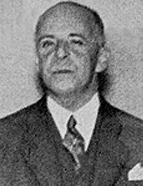

The diverse body of work produced by Gastão de Mello de Mattos highlights his advocacy for interdisciplinarity and collaborative efforts, rejecting the insularity of historians and narrow thematic specialization. He supported the development of joint projects integrating multiple methodologies, ideally led, in his view, by a "technician of general ideas" to harness the collective knowledge of the group (Idem, “Resposta do académico…” [Scholar response...], 1956, pp. 39-41). He believed that, in Portugal, only Virgínia Rau shared the same view — as he expressed in a brief biographical note he wrote in 1954 upon her admission to the Academia Portuguesa da História [Portuguese Academy of History] (Idem, ibidem, p. 38). Considering Mello de Mattos's approach to history-making, it becomes clear how he established a connection between it and military archaeology, a field that has been relatively underexplored in Portugal. His name became closely associated with the excavations at the military camp of São Jorge, the supposed location where the Battle of Aljubarrota took place, as part of a project conducted between 1958 and 1960 in collaboration with the Military History Commission. Led by archaeologist Afonso do Paço, the project also included Lieutenant-Colonel Augusto Botelho da Costa Veiga, who, alongside Mattos, was one of the "great enthusiasts of the study of the battle" (J. G. Monteiro, Aljubarrota Revisitada [Aljubarrota Revisited], 2001, p. 7). The preliminary results of these excavations were published in Aljubarrota - Trabalhos em execução de arqueologia militar [Aljubarrota — Military archaeology work in progress] (1958). Despite being naturally dated and supplemented by conclusions from more recent field interventions, this work continues to be revisited by military historians and has inspired many hypothetical reconstructive (re)interpretations of the Battle of Aljubarrota. Mello de Mattos continued to work on the project even after its official completion, leading guided tours of the battlefield.
Gastão de Mello de Mattos's historiographical career aligns with what José Amado Mendes termed "history from the inside", blending his professional background with his intellectual pursuits: a military man dedicated to military history (J. Mendes, "Caminhos e problemas... [Paths and problems...]", 1996, p. 393). His work stood out for its innovative and broad-ranging ideas, spanning from the Middle Ages to the contemporary period, with a particular focus on recruitment practices in the Portuguese army, military career paths and organisational structure. He often approached these topics from a micro perspective, emphasising "small war" tactics over major milestones and large military campaigns (G. M. Mattos, Um soldado... [A soldier...], 1939, p. 5). In addition to military history, political history was another of his key interests, particularly his study of the Restoration of 1640 and the events that followed, including the war with Castile (1640-1668) and the impact of internal crises within the Portuguese court during this period. From his perspective, this was an almost inexhaustible subject. However, Mello de Mattos’s motivation for studying it was also tied to a personal pursuit of the “historical truth” and a desire to demystify “the lie accumulated over more than a century” (G. M. Mattos, Nos bastidores... [Behind the scenes...], 1941, p. 7). Although Mattos regarded History as a blend of science and art, he believed that the finite and limited time nature of this discipline allowed only for a provisional attainment of "scientific truth." António da Silva Rêgo highlighted this perspective, noting that Mattos's article "Probabilidade Histórica" [Historical Probability] (1944) was the only theoretically and historiographically focused text ever published by the Academia Portuguesa da História (A. S. Rêgo, History in times of fascism..., 2015, p. 27). He placed key historical figures at the centre of his studies on the Restoration to deepen the understanding of 17th-century Portuguese politics and government, focusing on political factions led by figures such as Sebastião de César de Meneses (G. M. Mattos, Nos bastidores..., 1941) and the Count of Castelo Melhor. As Vinícius Dantas noted in his analysis of Mattos’s work, the Count’s deposition held even greater significance than that of King Afonso VI, as it revealed the various parties and their distinct agendas within the Portuguese court (V. Dantas, "A Privança…" [The Inner Circle...], 2013). He also employed prosopography and short biographies as part of his model of general observation, along with the analysis of secondary agents whose actions could help justify the roles of other primary actors in political intrigue (Idem, O Sentido... [The meaning...], 1944, p. 338). With this in mind, Nuno Gonçalo Monteiro also highlighted Gastão de Mello de Mattos's innovative vision emphasising the
This work is financed by national funds through FCT - Foundation for Science and Technology, I.P, in the scope of the projects UIDB/04311/2020 and UIDP/04311/2020.
